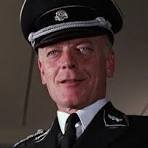- Messages
- 16,892
- Location
- New York City
New Adventures of Get-Rich-Quick Wallingford from 1931 with William Haines, Leila Hyams, Guy Kibbee, Ernest Torrence and Jimmy Durante
In the 1930s and 1940s, Hollywood created an entire genre of stories about urbane con men and women whom you know are crooked, but you can't help liking anyway, which is also why they are good at their "jobs."
In real life, these are vicious thieves who prey on the innocent and, often gullible, stealing their money, businesses and reputations. But on screen, these characters can often be lovable rapscallions who reform for romance or conscience by the end of the picture.
In the awkwardly titled New Adventures of Get-Rich-Quick Wallingford, William Haines stars as the silver-tongued handsome conman who can always spin a tale or come up with an excuse on the fly for some scam he's working.
Haines' team includes a sardonic straight man, played by Ernest Torrence. Also on the team is their gadfly factotum, played by Jimmy Durante, whose talents include pickpocketing, stealing cars and running less-than-honest errands.
A detective, played by Guy Kibbee, has relentlessly, but so far, unsuccessfully been pursuing Haines for years. Kibbee has a dogged but not mean-spirited persistence as he figures Haines has to slip up at some point.
With that setup, Haines and team head upstate from New York City where, using an uncashed scammed check form a prominent banker as "collateral," Haines gets involved in a land "deal."
The early fun is watching Haines create a scam from scratch. He uses his cribbed check to rope in a gullible couple who own some land. He and his team then draw in other locals by creating a "stir" in the town with fake geology reports and "overheard" conversations.
It's exaggerated but entertaining to see how greed takes hold. While the locals are victims, it's their greed that gets them. Haines dangles easy money, which causes the "investors" not to do their diligence as they are too worried about "missing out." It's FOMO 1931 style.
This would be just another scam for Haines except that the daughter of the couple whose land he's stealing is a very pretty blonde, played by Leila Hyams. Love is often the Achilles heel of scammers in Hollywood movies.
As the scam picks up steam, Haines and team have to juggle harder as the investors get anxious, but it's working until Haines, for love, decides to go legit. He wants to give the money back, but that doesn't go over well with Torrence, nor is a scam simple to "unwind."
The climax, no spoilers coming, smartly pulls all the plot threads together as the investors demand their money back, Torrence absconds with the money, Kibbee shows up to arrest Haines and Haines is distracted by amore. Then a deus ex machina appears.
Movies like these are plot and dialogue thick as words and webs of deceit are the most important tools con men and women have. Thus, right up to the end, Haines, Torrence and Durante are spitting out words at a gatling-gun pace to spin their way out of the mess.
It works not because you really believe it, but because you enjoy it. Haines is entertaining as the glib con man who falls in love. Torrence has a big-lug likability and Durante is enjoyably annoying in the way only Durante can be. He built a long career being enjoyably annoying.
Pretty Hyams is the movie's underused secret weapon as she has Haines' number almost from the start. The scenes where she calmly calls him out on his scamming - his spin doesn't work on her - are the most sincere ones in the movie.
The beauty of their relationship is that she knows exactly who he is, but loves him anyway, while he knows he can't love her and continue scamming. You wish the movie had spent more time on this relationship and a little less on some of the wash-rinse-repeat scams.
The lovable scammer is a stock character because there is something oddly appealing about a charming crook. We know in real life these are malignant people, but on screen we can enjoy their criminal talents and joie de vivre from a safe distance.
New Adventures of Get-Rich-Quick Wallingford has some early talkie clunkiness to it and is in need of a restoration, but it's a fun example of a story Hollywood would not only tell a lot in the 1930s and 1940s, but one that it still tells to this day.
